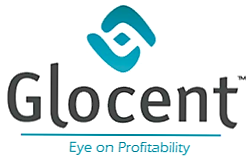
First question to ask regarding your sales incentives:
Whether a member of a sales organization, finance group or HR department, are you able to correctly quantify the value of variable pay for your employees? Strategic incentives should not be viewed like hand grenades, but based on a surgical focus. When evaluating incentive pay, close enough is not good enough.
Variable pay (commissions, bonuses, rewards, etc.) is commonly included in employee compensation packages. Our experience, however, confirms that it remains an ongoing challenge for executive and managers to accurately quantify the value it produces. Have you ever questioned how something so essential to profitability is allowed to be managed more like an art than a science? When we conduct compensation plan analyses for clients, we regularly identify a common philosophy that close enough is good enough. New clients are continually surprised by the misalignment our analysis uncovers between strategic objectives and the results they ultimately produce. Strategies are good to have, but in the end, results matter.
Actual Examples
One case in point: a new client (which is no longer in business) had never thought to validate the stock transaction information it was being provided by a large bank. The transaction data was used to calculate over five hundred international brokers’ incentives. What the brokerage firm could not determine, due to the convoluted and inaccurate data the bank provided, was that its incentives weren’t based on fact from the beginning of the process. Regardless of very aggressive incentive plans, they had no impact on the performance of the brokers. Why? Because incentives were based on erroneous information. Strategies were deployed; but basing them on bad data produced devastating results.
After automating its incentive management processes, another client uncovered within the first pay cycle that its new, high-profile sales strategy was failing. It faced two immediate problems: 1) the strategy itself had been based on seriously flawed sales data; and 2) its commission plans were causing sales reps to act contrary to company interests. Until the client was able to approach incentives through leveraging meaningful analytics, the incentives were counter-productive.
While selling is more of an art than a science; the cost-benefit equation used to determine the effectiveness of the art is pure science. If you are in a position where you bear some responsibility for your company’s profitability, consider transforming the “close enough is good enough” perspective to a “what we don’t know could be costing us” point of view. You may uncover some valuable information that could change the way you do business.
